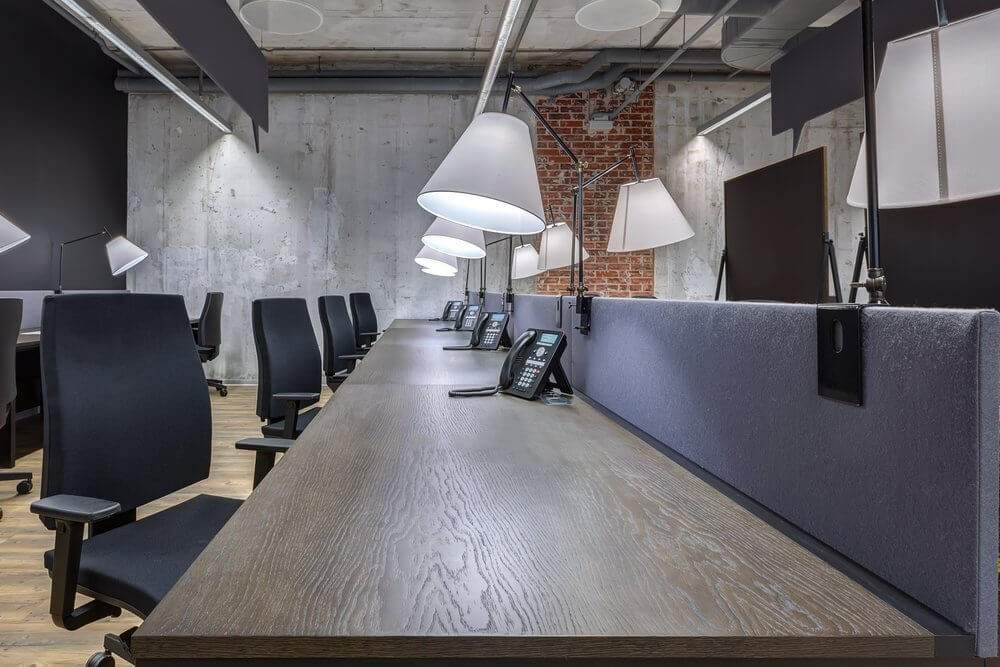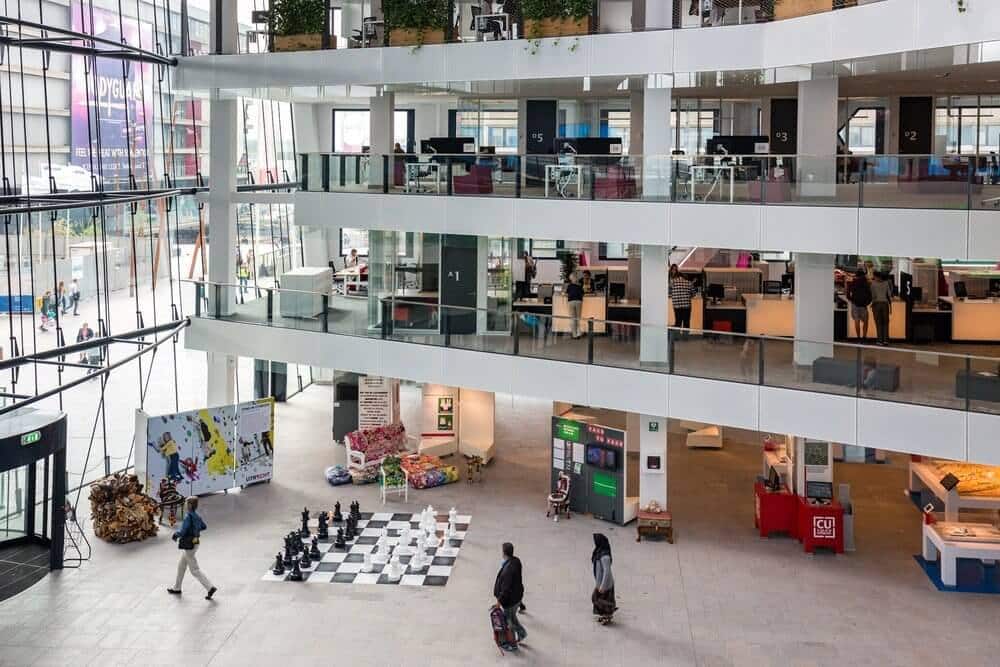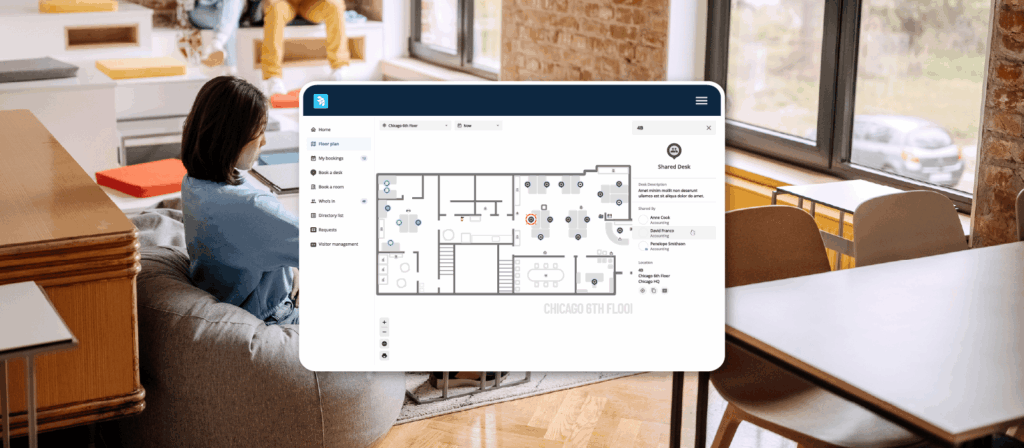Calculating an appropriate office desk sharing ratio and occupancy rate is a complex task with numerous moving parts. Anticipating how much space to allot per employee, how best to plan for flex meeting spaces and meeting rooms, and when to expand or contract your square footage can lead to numerous headaches for facility managers. And as employees embrace flexible schedules and working remotely, gauging the optimal mix of chairs, desks and equipment can feel like anybody’s guess.
And in planning for the return to the office after the COVID-19 pandemic, companies need to be more careful than ever before, keeping workplace distancing and other safeguards top of mind.
Because of all these factors, finding an ideal occupancy or desk sharing ratio may seem more art than science. But when it all boils down, your business’ unique details—team size, business phase and projected growth—can provide the context for finding a ratio that works for your company. Make sure you’re tracking these four data points to set yourself on a path to efficient occupancy.
1. Team size, function and desk usage

It makes sense that most businesses look to the size of the current employee list when considering an ideal occupancy or desk sharing ratio. But according to design firm Knoll, the trend towards distributed work—where employees’ days include a blend of focused, collaborative and informal work—has resulted in an average desk sharing ratio of 2.3 employees per desk. While this figure doesn’t include boardrooms, collaborative spaces and the wholesale space a traditional occupancy rate is based on, it remains a useful sign of the direction office occupancy is heading.
In order to zero in further, your company will want to consider individual departments and their time in-office or at-desk. A sales department or similar team that is largely out of the office may only need a few desks to support employees who have dropped in for office work: a ratio as high as 20:1 could be appropriate, depending on the amount of time employees spend on site.
If you’re unsure of your company’s current usage habits, be sure to source occupancy data from your desk booking and space management solution. Knowing the number of people relative to the number of desks plays a large part in determining the overall occupancy rate, and the more metrics you can investigate to this end, the better.
2. Business phase and projected growth
Modern business theory says most businesses perpetually occupy one of four phases in a cycle:
- Expansion: In which the business scales and takes on more employees
- Peak: The tip of the expansion phase, where the business will expand no further until the next cycle
- Contraction: A period marked by slowed growth and decreased employment
- Trough: The lowest valley of the contraction phase, where the business’ shrinkage bottoms out and the cycle starts anew
An awareness of your company’s current phase in this cycle can help you assess its ideal occupancy ratio, as will anticipating the stage ahead. A business that expects to shift from peak to contraction will have a different long-term occupancy plan than one moving from trough to expansion. As a company grows quickly, for instance, the space allocated to individual employees will likely shrink. When this happens, strategies like hot desking and remote working can be useful, since it can provide a desk sharing ratio of two or three employees per desk.
3. Industry

Another key influence when it comes to occupancy ratios is your company’s industry. For example: a recording studio and a call center occupying the exact same space will have wildly different occupancy needs. The studio will need soundproofed recording rooms and mixing floors; the call center will need desks and headsets. A space that fits two editing suites may be equally appropriate for 20 or more call-center employees.
Drilling down further, the industry question becomes an examination of what type of work your employees are involved in. Creative employees sharing a cowork area in one wing may benefit from the traditional 150 sq. ft. per person (or even a generous 200 sq. ft.); phone-based sales reps, meanwhile, may get by on 100 sq. ft. per person or less, depending on cube design and space specifics. The roles in your company will also determine layout factors like management offices, small consultation rooms, boardrooms and other space-taking features beyond the standard workspace. The right software solution can grant your business the metrics it needs to make the best possible decisions here; don’t ignore the power data-backed insights can offer while determining an optimal ratio. Industry trends can be useful, but data can help you understand your company’s unique needs and challenges.
4. Market competition
Unlike the other factors on this list, market competition is more of a contextual informer than a direct decision influencer. Although you almost certainly won’t know a competitor’s exact square footage per employee, insight into what others in your field are doing with their workspaces can be a great source of inspiration as you mold and shape your own.
Let’s say your company, which has always employed the traditional one-per-desk design, sees a competitor’s press release describing their modern, renovated facility that includes an open cowork area. Polling employees, it’s possible you’d find a willingness to explore a similar model. Since cowork spaces tend to require less square footage than traditional cubicles, you could find your occupancy rate shrinking—and you might uncover space for morale-boosting features such as communal fridges and ping-pong tables. In this scenario, your competitor’s occupancy style has helped you rethink your own.
It’s good to know what the folks across the street are doing for any number of reasons, occupancy planning not the least of them. Whether you’re moving into a new space or looking for ways to revitalize your current digs, this knowledge—along with the other determinants on this list—should be helpful as you home in on your ideal ratio.
See what else you can learn from occupancy data, and leverage best-in-class facility management software to help you get your calculations done.
Photo credits: Shutterstock / Monkey Business Images, Shutterstock / Petinov Sergey Mihilovich, Shutterstock / T.W. van Urk




